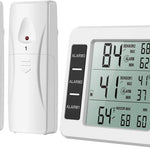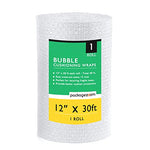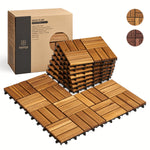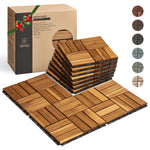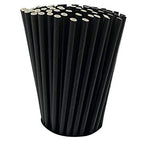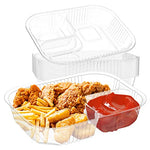You have no items in your shopping cart.
Trash bag dispensers may seem like a simple household or commercial item, but their role in maintaining cleanliness and efficiency in various settings cannot be overstated. This article will delve into the world of trash bag dispensers, exploring their types, uses, benefits, and more. Whether you're a homeowner, business owner, or facility manager, understanding the importance of a good trash bag dispenser can lead to a more organized and hygienic environment.
Overview of Trash Bag Dispensers
Trash bag dispensers are devices designed to hold and dispense trash bags, making them easily accessible for various waste disposal needs. These dispensers are used in households, commercial settings, healthcare facilities, and more, providing a convenient and efficient way to manage waste. The simplicity of their design belies the significant impact they have on maintaining cleanliness and organization in different environments.
Importance and Relevance
The relevance of trash bag dispensers lies in their ability to streamline waste management processes. In both residential and commercial settings, the need for efficient waste disposal is paramount. A well-designed trash bag dispenser not only ensures that trash bags are readily available but also helps to prevent clutter, reduce waste, and maintain a clean environment. As hygiene standards continue to rise, particularly in healthcare and food service industries, the role of trash bag dispensers becomes even more crucial.
Types of Trash Bag Dispensers
Wall-Mounted Trash Bag Dispensers
Wall-mounted trash bag dispensers are commonly found in commercial and public restrooms, kitchens, and healthcare facilities. These dispensers are designed to be attached to a wall, saving floor space and making it easy to access trash bags. They are ideal for areas where space is limited or where frequent bag changes are necessary.
Freestanding Trash Bag Dispensers
Freestanding trash bag dispensers are versatile and can be placed in various locations without the need for installation. They are often used in large commercial spaces such as warehouses, factories, and event venues where mobility and flexibility are important. These dispensers come in various sizes and can hold large rolls of trash bags, making them suitable for high-volume waste disposal.
Integrated Trash Bag Dispensers
Integrated trash bag dispensers are built into waste bins or other furniture, providing a seamless and discreet solution for waste management. These dispensers are often found in modern kitchens, bathrooms, and office spaces where aesthetics and functionality are equally important. By integrating the dispenser into the furniture, the overall appearance of the space is kept clean and uncluttered.
Commercial Trash Bag Dispensers
Commercial trash bag dispensers are designed to withstand heavy use in high-traffic areas. They are made from durable materials such as stainless steel or heavy-duty plastic and are often larger in size to accommodate bigger trash bags. These dispensers are commonly used in restaurants, hospitals, schools, and other institutions where large amounts of waste are generated daily.
Household Trash Bag Dispensers
Household trash bag dispensers are smaller and more compact, designed to fit into kitchens, bathrooms, and other residential areas. These dispensers are often designed with aesthetics in mind, blending in with the decor of the home. They are easy to use and can be mounted inside cabinets, under sinks, or in pantries for convenient access.
Specialty Trash Bag Dispensers
Specialty trash bag dispensers are designed for specific applications or unique environments. For example, dispensers used in healthcare settings may be designed to accommodate biohazard bags, while those used in industrial settings might be built to handle heavy-duty bags. Specialty dispensers are tailored to meet the unique needs of their environment, ensuring that waste management is both efficient and compliant with regulations.
Features of Trash Bag Dispensers
Material and Durability
The material of a trash bag dispenser plays a significant role in its durability and longevity. Common materials include stainless steel, plastic, and aluminum. Stainless steel dispensers are often preferred for their resistance to rust and corrosion, making them ideal for humid or wet environments. Plastic dispensers are lightweight and cost-effective, suitable for areas with less demanding conditions. Aluminum dispensers strike a balance between durability and weight, offering a versatile option for various settings.
Capacity and Size
Trash bag dispensers come in a range of sizes to accommodate different capacities. The size of the dispenser should be chosen based on the volume of waste generated and the size of the trash bags being used. Larger dispensers are suitable for commercial and industrial settings, while smaller dispensers are ideal for household use. It's important to choose a dispenser that can hold an adequate number of bags to minimize the frequency of refills.
Ease of Use
A good trash bag dispenser should be easy to use, allowing for quick and hassle-free access to trash bags. Features such as smooth dispensing mechanisms, clear instructions, and ergonomic designs contribute to ease of use. In commercial settings, where time and efficiency are critical, the dispenser's usability can have a direct impact on overall productivity.
Design and Aesthetics
The design of a trash bag dispenser can vary from utilitarian to sleek and modern, depending on its intended use. In residential settings, aesthetics are often a priority, with dispensers designed to complement the decor of the room. In commercial and industrial settings, functionality takes precedence, but design considerations such as ease of cleaning and resistance to tampering are still important.
Installation Methods
Trash bag dispensers can be installed in various ways, depending on their type and the environment in which they are used. Wall-mounted dispensers require secure installation with screws or adhesive, while freestanding dispensers simply need to be placed in the desired location. Integrated dispensers may require professional installation, particularly if they are built into furniture or fixtures. The ease of installation is an important consideration, especially in commercial settings where time and resources may be limited.
Maintenance Requirements
Regular maintenance is essential to ensure that trash bag dispensers remain functional and hygienic. This includes cleaning the dispenser to remove dirt and bacteria, checking for wear and tear, and replacing any damaged parts. Dispensers made from durable materials like stainless steel may require less frequent maintenance, but it's important to follow the manufacturer's recommendations to ensure longevity.
Benefits of Using Trash Bag Dispensers
Enhancing Hygiene
Trash bag dispensers play a crucial role in maintaining hygiene, particularly in settings such as hospitals, kitchens, and public restrooms. By providing easy access to trash bags, dispensers help ensure that waste is promptly and properly disposed of, reducing the risk of contamination and the spread of germs.
Improving Efficiency
In both commercial and residential settings, efficiency is key to effective waste management. Trash bag dispensers streamline the process of bag replacement, allowing users to quickly access and replace bags without having to search for a new roll. This can save time and reduce the likelihood of spills or messes.
Cost-Effectiveness
Using a trash bag dispenser can be more cost-effective than storing trash bags loosely or in less organized ways. Dispensers help prevent waste and overuse of bags by controlling the amount dispensed at a time. This can lead to savings in the long run, particularly in high-traffic areas where large quantities of bags are used.
Reducing Waste
Trash bag dispensers are designed to minimize waste by ensuring that only the necessary amount of bag material is used. This can help reduce the overall consumption of plastic, which is beneficial for both the environment and the budget. Some dispensers are even designed to work with eco-friendly or biodegradable bags, further reducing the environmental impact.
Enhancing Organization
A well-organized space is easier to maintain and more pleasant to work or live in. Trash bag dispensers contribute to organization by keeping bags neatly stored and readily accessible. This reduces clutter and helps ensure that waste disposal is always convenient and efficient.
Choosing the Right Trash Bag Dispenser
Assessing Needs and Requirements
Before choosing a trash bag dispenser, it's important to assess your specific needs and requirements. Consider factors such as the volume of waste generated, the type of environment, and the frequency of bag changes. This will help you determine the appropriate size, type, and material for your dispenser.
Budget Considerations
Budget is often a key factor in selecting a trash bag dispenser. While it may be tempting to opt for the cheapest option, it's important to consider the long-term value. Investing in a durable, high-quality dispenser can save money in the long run by reducing the need for frequent replacements and maintenance.
Space and Location
The available space and location of the dispenser should also be taken into account. Wall-mounted dispensers are ideal for areas with limited floor space, while freestanding dispensers can be placed wherever they are needed most. Consider the layout of the room and choose a dispenser that will be easily accessible without obstructing movement.
Aesthetic Preferences
In residential settings, aesthetic preferences may play a significant role in the choice of a trash bag dispenser. Look for designs that complement the decor of the room, whether it's a sleek, modern kitchen or a cozy, traditional bathroom. Integrated dispensers offer a seamless solution that can blend into the surroundings.
Brand Reputation
When purchasing a trash bag dispenser, it's wise to consider the reputation of the brand. Well-known brands with a history of quality products are more likely to offer reliable, durable dispensers. Read reviews and seek recommendations to ensure that you're choosing a dispenser that will meet your needs.
How to Install Trash Bag Dispensers
Step-by-Step Installation Guide
Installing a trash bag dispenser is typically straightforward, but it's important to follow the correct steps to ensure stability and functionality. Begin by choosing the appropriate location for the dispenser, ensuring it is within easy reach and does not obstruct movement. If you're installing a wall-mounted dispenser, use a level to ensure it is straight before marking the drill holes. After drilling, insert the anchors and screws, then attach the dispenser to the wall. For freestanding dispensers, simply place them in the desired location and secure them if necessary.
Tools Required
The tools required for installation will vary depending on the type of dispenser. For wall-mounted dispensers, you'll typically need a drill, level, screws, and wall anchors. Integrated dispensers may require additional tools depending on the complexity of the installation.
Common Installation Mistakes to Avoid
Avoid common mistakes such as installing the dispenser too high or too low, which can make it difficult to access. Ensure that the dispenser is securely attached to the wall or fixture to prevent it from becoming loose over time. If you're unsure about the installation process, consult the manufacturer's instructions or seek professional assistance.
Applications of Trash Bag Dispensers
Household Applications
In the home, trash bag dispensers are most commonly found in kitchens, bathrooms, and laundry rooms. They provide a convenient way to access trash bags for daily waste disposal, helping to keep the home clean and organized. Integrated dispensers are particularly popular in modern kitchens, where they can be hidden away inside cabinets.
Commercial Applications
Commercial settings such as restaurants, offices, and retail stores benefit greatly from the use of trash bag dispensers. These dispensers help manage large volumes of waste, ensuring that bags are readily available for staff. Wall-mounted and freestanding dispensers are commonly used in these environments.
Industrial Applications
In industrial settings, where large amounts of waste are generated, heavy-duty trash bag dispensers are essential. These dispensers are designed to hold large rolls of heavy-duty bags, making them suitable for use in warehouses, factories, and construction sites.
Medical and Healthcare Applications
Healthcare facilities require specialized trash bag dispensers to handle biohazardous waste. These dispensers are designed to meet stringent hygiene standards and are often equipped with features such as hands-free operation and secure locking mechanisms. Proper waste management is critical in these settings to prevent the spread of infection.
Hospitality Industry Applications
The hospitality industry relies on trash bag dispensers to maintain cleanliness and hygiene in guest rooms, kitchens, and public areas. These dispensers are often designed to be discreet and aesthetically pleasing, ensuring that they blend in with the overall decor of the establishment.
Case Studies and Real-Life Examples
Success Stories from Various Industries
One successful example of trash bag dispenser implementation can be found in a large hotel chain that integrated dispensers into all guest rooms and public areas. This move not only improved the efficiency of housekeeping staff but also enhanced the overall guest experience by ensuring that waste disposal was convenient and discreet.
Testimonials from Users
Users of trash bag dispensers often praise the convenience and organization that these devices bring to their spaces. In particular, healthcare professionals have noted the importance of having easy access to trash bags in maintaining hygiene standards and preventing the spread of infection.
Challenges and Solutions in Using Trash Bag Dispensers
Common Problems and How to Solve Them
Common problems with trash bag dispensers include difficulty in dispensing bags, jams, and wear and tear over time. These issues can often be resolved by regular maintenance, such as cleaning the dispenser and ensuring that it is properly loaded with bags. If problems persist, it may be necessary to replace worn parts or consider upgrading to a more durable model.
Tips for Maintenance and Longevity
To extend the life of your trash bag dispenser, follow a regular maintenance schedule that includes cleaning, checking for wear and tear, and replacing any damaged parts. Use the dispenser as intended and avoid overloading it with more bags than it can handle.
Future Trends in Trash Bag Dispensers
Technological Innovations
The future of trash bag dispensers is likely to include technological innovations such as automated dispensers and smart systems that can monitor usage and alert users when it's time to refill. These innovations will further enhance the efficiency and convenience of waste management.
Eco-Friendly Designs
As sustainability becomes increasingly important, we can expect to see more eco-friendly designs in trash bag dispensers. This includes dispensers made from recycled materials and those designed to work with biodegradable or compostable bags.
Smart Trash Bag Dispensers
Smart trash bag dispensers are an emerging trend that integrates technology to improve waste management. These dispensers can automatically dispense bags, track usage, and even order new bags when supplies run low. While still in the early stages of development, smart dispensers have the potential to revolutionize the way we manage waste.
Expert Insights and Opinions
Quotes from Industry Experts
According to waste management expert John Smith, "Trash bag dispensers are an essential tool for maintaining hygiene and efficiency in both residential and commercial settings. As technology advances, we can expect to see even more innovative solutions that make waste management easier and more sustainable."
Predictions for the Future of Trash Bag Dispensers
Industry experts predict that the future of trash bag dispensers will focus on sustainability and convenience. With the rise of smart technology and eco-friendly materials, dispensers will become more efficient, reducing waste and improving overall hygiene in various settings.
FAQs about Trash Bag Dispensers
Common Questions and Detailed Answers
Q: What is the best material for a trash bag dispenser?
A: The best material depends on the environment in which the dispenser will be used. Stainless steel is ideal for humid or wet environments, while plastic is lightweight and cost-effective for less demanding conditions.
Q: How do I choose the right size dispenser for my needs?
A: Consider the volume of waste generated and the size of the trash bags you use. Choose a dispenser that can hold enough bags to minimize refills while fitting comfortably in your space.
Q: Can I install a trash bag dispenser myself?
A: Yes, most trash bag dispensers are designed for easy installation. Follow the manufacturer's instructions carefully, and use the appropriate tools for the job.
Q: Are there eco-friendly trash bag dispensers available?
A: Yes, there are dispensers made from recycled materials and designed to work with biodegradable or compostable bags, making them a more sustainable choice.
Q: What maintenance does a trash bag dispenser require?
A: Regular maintenance includes cleaning the dispenser, checking for wear and tear, and replacing any damaged parts. Follow the manufacturer's recommendations for best results.
Conclusion
Trash bag dispensers are a valuable tool in maintaining cleanliness and organization in various settings. From households to healthcare facilities, these dispensers play a crucial role in efficient waste management. By choosing the right dispenser, following proper installation procedures, and performing regular maintenance, you can enhance hygiene, reduce waste, and improve overall efficiency.
For those looking to improve their waste management practices, consider investing in a high-quality trash bag dispenser. With the right knowledge and tools, you can create a cleaner, more organized environment in your home or workplace. Explore the latest innovations and stay informed about future trends to ensure that your waste management practices are both effective and sustainable.


